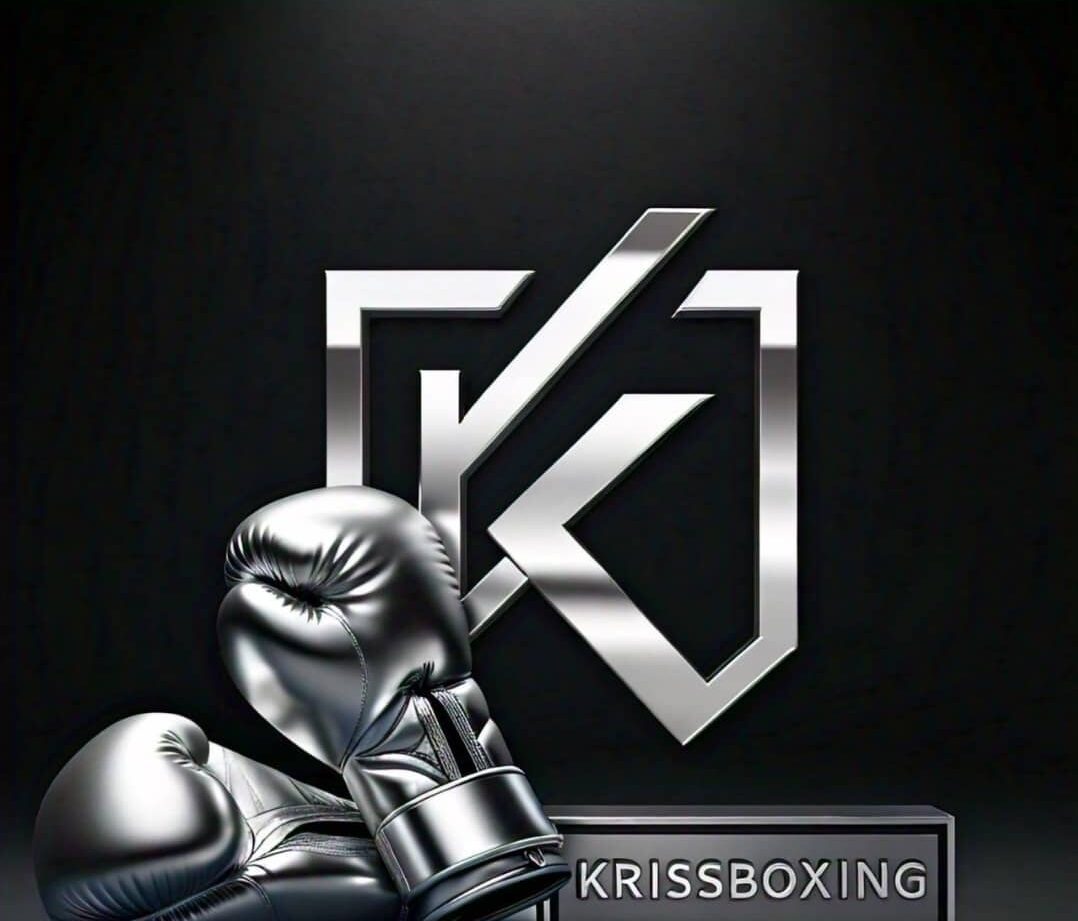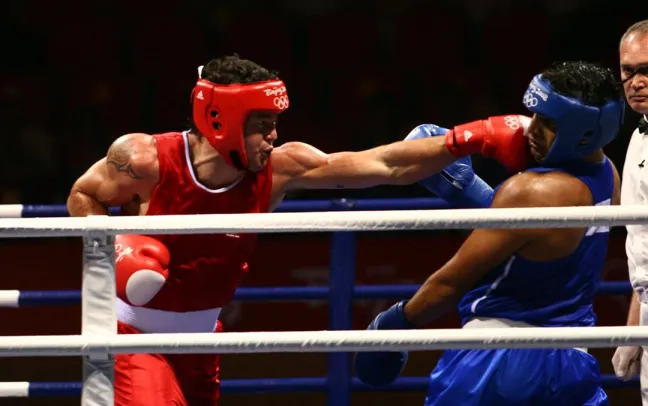You’ve been drilling combos, shadowboxing, and working on head movement, but when it’s time to spar—you blink. You flinch. You close your eyes.
And in that split second, you lose sight of your opponent—and possibly the exchange.
This is one of the most common problems beginners and even intermediate fighters face in the ring. In boxing and combat sports, vision is everything. The moment your eyes shut, you’re no longer in control.
In this article, we’ll break down the psychology and physiology behind why this happens and provide practical, proven solutions to help you keep your eyes wide open—even when punches are flying toward your face.
Why Do You Blink or Close Your Eyes During Sparring?
Let’s get one thing straight: blinking is a natural reflex. It’s your body’s way of protecting your eyes from danger. So when a glove is speeding toward your face, your brain sends a signal: Close your eyes!
The problem is—you need to see punches to defend, counter, or evade them.
Here’s what’s going on:
1. Survival Instinct (Startle Reflex)
The blink reflex is hardwired into our nervous system. Any perceived threat to your face triggers it—instantly.
Feature: Involuntary muscle response triggered by the brainstem.
Benefit: Helps us avoid real threats like flying objects.
Drawback in boxing: You can’t defend what you can’t see.
2. Fear and Anxiety
Fear of getting hit—especially in the face—causes your body to tense up and become reactive. If you’re not relaxed, you’re more likely to flinch.
Feature: Emotional trigger activating fight-or-flight mode.
Benefit: Heightens awareness but can also override technique.
Drawback in boxing: Impairs timing, footwork, and perception.
3. Lack of Exposure
If you haven’t been hit enough, your body hasn’t learned that punches don’t always hurt or cause damage.
Feature: Inexperience with controlled contact.
Benefit: None—it’s just a hurdle to overcome.
Drawback in boxing: Makes you hyper-reactive to any threat.
4. Poor Defensive Drills
If your training hasn’t focused on integrating head movement with vision retention, you’ll naturally look away or blink.
Feature: Lack of integration between visual tracking and defense.
Benefit: None until properly trained.
Drawback in boxing: You’ll miss cues, feints, and counters.
How to Stop Blinking or Closing Your Eyes in Sparring
This isn’t something that goes away overnight. But with consistent effort and the right drills, it’s 100% fixable.
1. Progressive Exposure Drills (Desensitization)
Start by getting comfortable with objects coming toward your face in a controlled environment.
Drills:
Have a partner throw slow, non-contact punches at your face while you keep your eyes open.
Use pool noodles or focus mitts and track them with your eyes while slipping or parrying.
Shadowbox in the mirror and practice imagining punches coming at you—train your gaze.
Feature: Gradual exposure to visual threats.
Benefit: Builds tolerance and reduces the blink reflex over time.
2. Visualization & Mental Rehearsal
Close your eyes and mentally rehearse facing an opponent without flinching. Imagine punches coming at you and staying relaxed and focused.
Feature: Neural pattern reinforcement using the mind.
Benefit: Helps override reflexive responses and builds mental toughness.
3. Keep Your Chin Down & Eyes Up
This simple tweak in posture helps stabilize your line of vision while protecting your jaw. It also gives you a clearer view of your opponent’s upper body.
Feature: Head position control.
Benefit: Improves visibility and reduces vulnerability to uppercuts and hooks.
4. Track the Chest or Shoulders, Not the Gloves
Focusing directly on a moving glove makes you more prone to blinking. Instead, watch the center mass (shoulders or chest) where punches initiate from.
Feature: Visual focal point adjustment.
Benefit: Keeps your gaze steady and improves reaction time.
5. Incorporate Controlled Sparring
Do light-contact sparring where you focus on keeping your eyes open, not on scoring or speed.
Rules:
20–30% power only.
Agree not to target the head too much in early rounds.
Use headgear if needed for comfort.
Feature: Realistic simulation with reduced risk.
Benefit: Builds confidence without triggering the fear reflex.
6. Slip Line & Double-End Bag Work
These tools are perfect for teaching head movement while keeping the eyes engaged.
Drills:
Slip line: Move side to side while looking forward—never break eye contact with an imagined opponent.
Double-end bag: Forces you to anticipate and react without blinking, improving reflexes and timing.
Feature: Reaction-based training.
Benefit: Trains hand-eye coordination and head control under pressure.
7. Breathe and Relax
A tense fighter blinks more. Tension = fear = blinking.
Breathing Tips:
Inhale through your nose, exhale slowly through your mouth.
Breathe rhythmically while moving.
Feature: Parasympathetic nervous system activation.
Benefit: Reduces stress, increases focus and visual clarity.
Summary Table: Techniques to Stop Blinking in Sparring
| Technique | Core Feature | Benefit |
|---|---|---|
| Progressive Exposure | Slow, repeated practice | Reduces fear response and builds tolerance |
| Visualization | Mental rehearsal | Reinforces neural patterns |
| Chin Down, Eyes Up | Proper posture | Enhances vision and defense |
| Chest Tracking | Watching shoulder area | Reduces overreaction to glove movement |
| Controlled Sparring | Low intensity focus drills | Builds confidence and reflexes |
| Slip Line/Double-End Bag | Reflex training with movement | Improves eye control and awareness |
| Breathing Techniques | Tension control | Lowers anxiety and blinking frequency |
FAQ – Everything You Need to Know
What if I still flinch after all the drills?
You may need to slow things down. Revisit light sparring, refine your breathing, and increase your comfort with contact. Don’t rush it.
Is it normal to blink during sparring?
Yes. It's a common beginner reflex. The key is learning to control and reduce it over time with proper drills.
How long does it take to stop blinking during sparring?
It varies. With consistent exposure and proper mental training, most fighters improve significantly within 4–6 weeks.
Can blinking be completely eliminated?
Not entirely. You’re human, not a robot. The goal is not zero blinking, but minimizing it to the point that it doesn’t affect your performance.
Should I tell my coach about this issue?
Absolutely. A good coach will adjust your training plan and add drills specifically to help you overcome it.
Final Thoughts & Recommendation
Keeping your eyes open during sparring is one of the most critical skills a boxer can develop. It’s not just about being tough—it’s about being aware, responsive, and strategic.
Remember:
Vision = Reaction Time = Defense = Survival.
Don’t be discouraged if it takes time. Like any other skill in combat sports, this one requires patience, repetition, and mental focus.
Recommendation:
Start incorporating one new anti-blink drill per training session. Begin with non-contact exposure drills, then progress to light sparring with a trusted partner.
Also, consider recording your sparring rounds. Watch how often you blink or look away—and track your improvement week by week. Progress is power.
Train your eyes. Calm your mind. Keep your focus.


